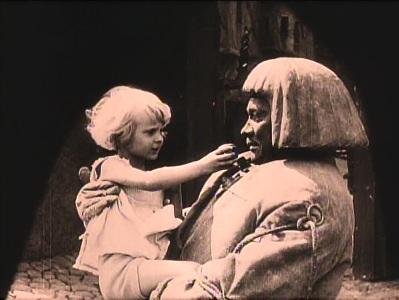A golem—a large, powerful creature made of clay—is a figure from Jewish folklore. Based on the best-known version of the legend, Paul Wegener’s 1920 film Der Golem: Wie er in die Welt kam (The Golem: How He Came into the World) is a featured character in the upcoming exhibition Masterworks of Expressionist Cinema: The Golem and Its Avatars, along with illustrations from the 1915 novel The Golem and contemporary representations of the creature.
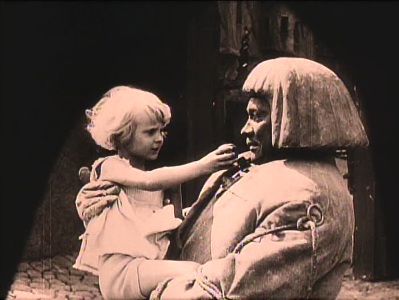 Paul Wegener and Carl Boese, Film still from Der Golem: Wie er in die Welt kam (The Golem: How He Came into the World), 1920, written by Paul Wegener and Henrik Galeen, produced by Paul Wegener, B&W, silent
Paul Wegener and Carl Boese, Film still from Der Golem: Wie er in die Welt kam (The Golem: How He Came into the World), 1920, written by Paul Wegener and Henrik Galeen, produced by Paul Wegener, B&W, silentDer Golem is set in 16th-century Prague, where a cruel emperor persecuted Jewish residents. Rabbi Loew fashions the Golem from riverbed clay and brings him to life with a magical amulet. The creature rampages through the city, crushing the enemies of the Jews. The Golem legend had heightened currency in Europe in the 1920s, when anti-Semitism was on the rise.
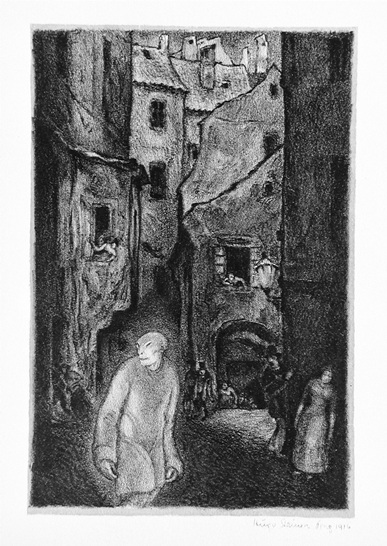 Hugo Steiner Prag, Die Erscheinung des Golem (The Appearance of the Golem), 1915–16, the Robert Gore Rifkind Center for German Expressionist Studies, M.82.287.68f. © The Estate of Hugo Steiner-Prag, photo © Museum Associates/LACMA
Hugo Steiner Prag, Die Erscheinung des Golem (The Appearance of the Golem), 1915–16, the Robert Gore Rifkind Center for German Expressionist Studies, M.82.287.68f. © The Estate of Hugo Steiner-Prag, photo © Museum Associates/LACMAThe idea of the Golem, an inanimate object brought to life, has many antecedents in art and literature, including the creation of Adam, Pinocchio, Frankenstein’s monster, and the robots and cyborgs that continue to populate comic books and movies. The Golem plays the role of superhero in a 1977 edition of The Invaders, a Marvel comic book, and the 2013 Breath of Bones comic series.
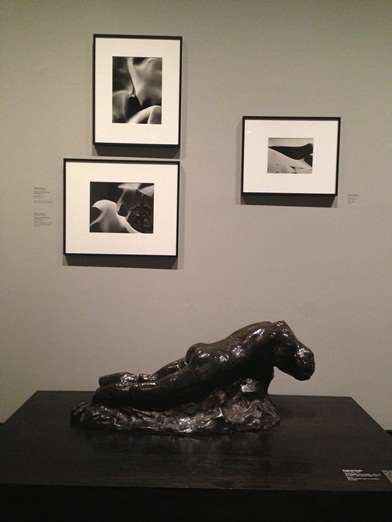 Auguste Rodin, The Earth, first modeled c. 1884–99, possibly cast in 1967, gift of B. Gerald Canter Art Foundation (M.73.108.6)
Auguste Rodin, The Earth, first modeled c. 1884–99, possibly cast in 1967, gift of B. Gerald Canter Art Foundation (M.73.108.6)Additionally, an earlier work that alludes to the creation of Adam from dirt can be found in another exhibition at LACMA. Down to Earth: Modern Artists and the Land, before Land Art features Auguste Rodin’s sculpture The Earth (1894–99), which depicts a figure struggling to extricate itself from primordial mud. The work was described by a contemporary critic as “a veritable clod of earth in human form, the beginning of creation.” More than 60 years later, Jean Dubuffet cobbled together figures by collaging his own cut-up prints made of impressions from dirt and stone. The artist referred to the initial prints as “primordial matrices,” using them as source material to create his at once amusing and tragic Golem-like characters made of “earth.”
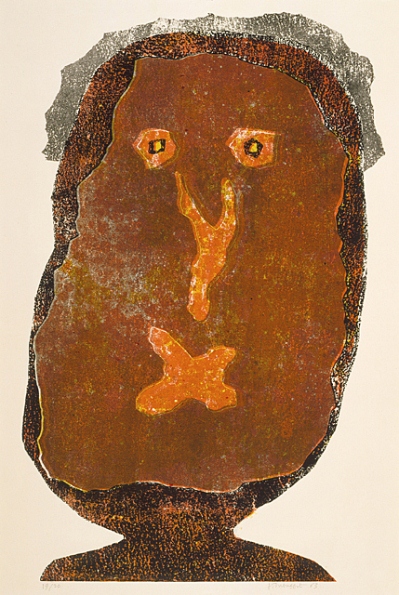 Jean Dubuffet and Serge Lozingot, L'Enfle Chique III, 1961–63, gift of Lucille and George N. Epstein (M.91.123.2)
Jean Dubuffet and Serge Lozingot, L'Enfle Chique III, 1961–63, gift of Lucille and George N. Epstein (M.91.123.2)


